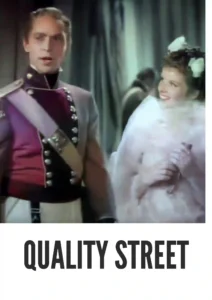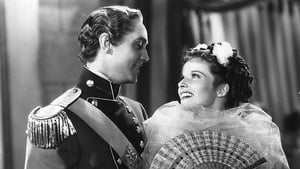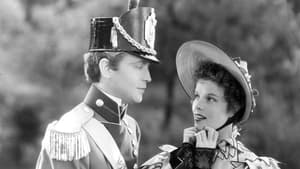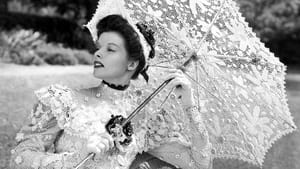Video Sources 0 Views

Synopsis
Love, Loss, and Transformation: Quality Street (1937) in Vibrant Color

Step back in time with Quality Street, a delightful period drama from 1937, now beautifully colorized for a viewing experience like never before. Starring Katharine Hepburn and Franchot Tone, this film, based on J.M. Barrie’s play, offers a heartwarming tale of love, societal expectations, and personal transformation. Often compared to titles such as Little Women due to its exploration of similar themes, this HD download brings a classic story to life with renewed vibrancy. Perfect for fans of classic romance and those who appreciate Hepburn’s early work, Quality Street is a timeless film.
Quality Street Storyline: A Tale of Love and Disguise
Quality Street follows the story of Phoebe Throssel (Katharine Hepburn), a woman who runs a school for young children with her sister Susan. When her beloved Valentine Brown (Franchot Tone) returns from the Napoleonic Wars, he inadvertently insults her appearance, leading Phoebe to believe she has lost her chance at love.Heartbroken, Phoebe decides to reinvent herself by disguising herself as her own fictional niece, Miss Livvy, a younger, more vivacious version of herself. As Miss Livvy, she attracts Valentine’s attention, creating a complicated love triangle and a series of humorous situations. Through her charade, Phoebe explores themes of identity, societal expectations, and the enduring power of love. Ultimately, Quality Street is a charming and heartwarming story about second chances and the courage to be true to oneself.
Movie Cast
The film features a stellar cast of actors who bring this classic story to life:
- Katharine Hepburn as Phoebe Throssel/Miss Livvy
- Franchot Tone as Dr. Valentine Brown
- Eric Blore as Recruiting Sergeant
- Bonita Granville as Isabella
Movie Genre
Quality Street falls into the genre of period drama, with significant elements of romance and comedy. Its focus on societal customs, personal relationships, and emotional growth makes it a captivating and heartwarming film.
Historical Context: The Golden Age of Hollywood
Released in 1937, Quality Street represents a significant era in Hollywood history, showcasing the studio system at its peak and the popularity of adaptations from literature and theater. The film reflects the trends and tastes of the time, with its focus on romance, societal manners, and strong female characters. Katharine Hepburn, already a rising star, solidified her reputation with her memorable performance in this film.
Colorization Details
This colorized version of Quality Street has been meticulously restored using modern digital techniques, enhancing the visual appeal while preserving the film’s original charm and elegance. The colorization process involved carefully analyzing the grayscale tones of the original black and white footage and assigning appropriate colors to each scene. This painstaking process brings new life to the characters and settings, making the story even more engaging for modern audiences.
Technical Details
- Director: George Stevens
- Screenplay: Mortimer Offner, Allan Scott
- Based on: the play by J.M. Barrie
- Cinematography: Joseph H. August
- Edited by: Henry Berman
- Production Company: RKO Radio Pictures
- Distributed by: RKO Radio Pictures
- Runtime: 84 minutes
Technical Specifications
- Download Format: MP4
- Resolution: HD (1080p)
- Compatibility: Compatible with most devices, including smartphones, tablets, computers, and smart TVs.
Reviews and Critical Reception
Quality Street (1937) is celebrated for its charming story, excellent performances, and elegant production design. Katharine Hepburn’s portrayal of Phoebe Throssel/Miss Livvy is particularly praised, showcasing her versatility and charisma. While the film may not be as widely discussed as some of Hepburn’s later works, it remains a beloved classic.
FAQs
- Q: What is Quality Street about?
- A: Quality Street is a period drama about a woman who disguises herself as her own niece to win back the affections of her former love.
- Q: Is Quality Street (1937) a well-known Katharine Hepburn film?
- A: While not as famous as some of her other movies, Quality Street is a beloved classic and showcases Hepburn’s talent.
- Q: Is this version of Quality Street colorized?
- A: Yes, this version has been professionally colorized to enhance the viewing experience.
- Q: What makes Quality Street interesting for classic film fans?
- A: Quality Street offers a glimpse into Hollywood’s Golden Age and features a charming story with excellent performances.
- Q: What is the download format?
- A: The download format is MP4, which is compatible with most devices.
- Q: What resolution is the download?
- A: The resolution is HD (1080p), providing a high-quality viewing experience.
Download Now in HD!
Watch Quality Street Today!














